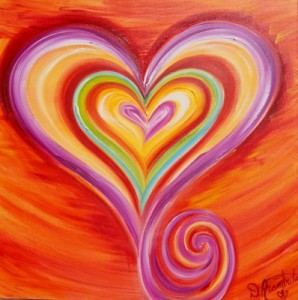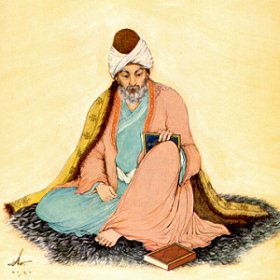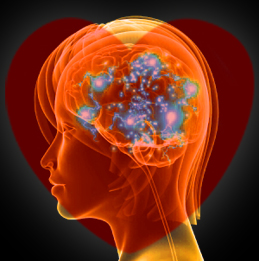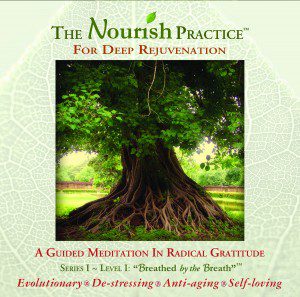28th August 2012
Contributing Writer for Wake Up World
(This is Part II in a series. Part I can be read here.)
Learn the alchemy true human beings know.
The moment you accept what troubles you’ve been given,
the door will open.
Welcome difficulty as a familiar comrade.
Joke with torment brought by the Friend.
Sorrows are the rags of old clothes and jackets
that serve to cover, then are taken off.
That undressing,
and the naked body underneath,
is the sweetness that comes after grief.
The hurt you embrace becomes joy.
Call it to you where it can change.
— Rumi
Psychological pain and difficulty, including fear, have crucial ingredients for our survival and happiness. But, most of the time we are busy either defending against our hurts, trying to forget them, run away from troubles, or otherwise inappropriately avoid the reality that fear points out for us. In the process, we lose our hearts, our connection to our bodies, to what is sacred, and to one another. What kind of life does that leave us? This approach is the kiss of death, and why centuries later poets like Rumi are still echoing through the darkness of our bodies.
Poetic truths like Rumi’s advice to call our hurts to us (overtly or inwardly, to recollect them) make even more sense—literal grounded sense—when we understand the neurobiology of emotional memory and heart-mind emotional healing. Unfortunately, many of us do not spend much time following Rumi’s advice. We act literally, chasing after happiness rather than discovering it paradoxically by undoing our hurts. To undo our hurts, we must first—corroborating Rumi’s wisdom— call our pains to us.
Collectively, however, we lack the wisdom of paradox, and therefore the sacred experience of being renewed by our darkest hours. What pains us therefore remains lodged in us, like bits of radioactivity, poisoning our hearts and relationships, our lives and the welfare of the Earth. Our emotional memories and their associated emotions and physical reactions do not just disappear or fade away any more than the electrical wires in your house fail to turn on the lights just because you will or curse them not to function when you flip the light switch. The equivalent of flipping on the light switch for emotional memory is when these pathways are triggered by current situations that remind us of the past.
If we can appreciate joy and fulfillment paradoxically, breathe deeply into our light and darkness, and consciously invite ourselves into our hurts, we can discover this hidden, truly comprehensive, grounded, soul-enriching and paradoxical path of healing. This way, our buried hurts and current emotional triggers are not nuisances and obstacles to spirituality but “dark angels,” daemons, spiritual homing signals—metaphorical truths replete with the images for our integrity that can lead us through the doors of trouble, remove our ragged old clothes, and deliver us into the naked freedom of comprehensive wellness. On a neurobiological level, our heartaches and losses get neurologically rewired for positive experience when activated in the presence of love, compassion, acceptance, and reason. This is to have our “rags of old clothes and jackets” removed—where poetry meets reality and personal meaning, closing the gap between reading this article and practicing its message.
A silk worm eating leaves makes a cocoon.
Each of us weaves a chamber of leaves and sticks.
Silk worms begin to truly exist as they disappear inside that room.
Without legs we fly.
When I stop speaking, this poem will close
and open its silent wings.
The threads from undoing the rags of our troubles can be used as silk to wrap ourselves into a cocoon for new life. Allowing yourself to disappear “inside that room” is a courageous spiritual stance to activate the deepest transformation and potential for renewal. Remember too, the cells of your worm-body you protect from annihilation is the healing that gets left undone, the good life you lose. This is why when Rumi recommends for our hurt, “Call it to you where it can change,” I imagine he means all of it, so that we can heal all of it.
Yes, “without legs we fly.” But I would caution all whirling dervishes that as symbols for groundedness, everything about “legs” is vital for our integration. The silkworm’s legs also represent the branching neural pathways of our bodies, including the concretions of memory and recorded heartaches, all or which keep us both functionally and dysfunctionally earthbound. I have to imagine that even though the legs of Rumi’s silkworm are transformed into wings, they carry with them the memory and grounded, integrated psychological function of what “legs” do for us on Earth, allowing us to experience life, and what we call divinity, in and from our bodies. When we undo our traumatized neurological legs we fly while still comprehensively grounded, as the epitome of spiritual integration. We achieve this integration by clearing our bodies of physical and emotional gunk, which makes way for our vitality, freedom, and creativity to flow from the depths of what we cleared. Occupying these depths is to clear out the ground of our own being. Transformational emotional healing as described in these pages makes us more grounded than typical “grounding practices” like tai chi and certain meditations (which I consider “effects” that do not give lasting integrated change, yet are valuable as tools for the deep work of emotional release) can deliver because the latter never significantly transform the blocked and gunked-up emotional space in our own bodies.
Even the way we think of “grounding” is linear and short-sighted. We consider it in a similar way to how we think of “attaining” most spiritual progress, by reaching for it in the positive, literal way. Yet, grounding works similar to the way we achieve integral spirituality: by negative action, which is not only to focus and “call” to us our own sequestered negativity (and thereby positively progress by negation) but to create space in ourselves as the “ground” we overtly and literally try to “move into” through popular grounding practices. These former practices, however, are temporary (which I call “effects”) and only scratch the surface of the ground we are capable of entering. The grounding we intuitively gravitate for is the clear ground inside ourselves, which when we clear, gives us the robust, whole-bodied enduring groundedness we mistakenly search for via the effects of outward “ground” and the grounding exercises to connect to it.
Not long ago, it was believed that our brains were not mutable after early development. Evolving discoveries in neuroplasticity, however, show that our brains, and therefore our experience of life, including that of our concealed emotional memories, can be changed well into adulthood. In other words, we can heal our past to free the present—by going into our past to free the present. Our emotional memories and attendant reactions, sabotaging, violence, and feel-bad associations can be changed and spare us their painful dose. This is the real “power of now” and the “real secret,” that does not have to be called a secret because it is not mysterious, only unpopular because it involves hard work in the trenches of our hearts’ pained depths.
In one sense, living paradoxically is synonymous with our brains’ capacity for neuroplasticity. Spanning the distance from dark to light in the spectrum of paradox suggests that more of our brains and hearts are exercised in the process. Not only exercised, but this simultaneous activation of opposites links more aspects of our brains and hearts, exercising and developing more of our human potential. This union is made possible in significant part by the corpus callosum, a part of our brains that enhances communication between our brains’ hemispheres, discussed further just below.
Not surprisingly, another recent neuroscientific discovery is that heightened creativity has been correlated not so much with increased activity in one or two regions of the brain, as once supposed, but with increased activity in many aspects of the brain not previously thought to influence creativity. Dr. Allen Braun, commenting on his recent study in this field says, “You see a strong and consistent pattern of activity throughout the brain that enables creativity.”
The left and right hemispheres of our brains have long represented (generally) our logical and emotional faculties, respectively. While brain research confirms that both sides of the brain are involved in nearly every human activity, we do know that the left side of the brain is the seat of language and processes in a logical and sequential order. The right side is more visual and processes intuitively, holistically, and randomly. In this sense, the hemispheres can be considered to be the Yin and Yang hubs of our psyches, our head and hearts. The corpus callosum, the part of our brains that joins its two hemispheres, is another poetic clue to the wholeness of paradox. Yet the implications of the corpus callosum are not just poetic. Rita Carter, the author of Mapping the Mind, comments, “that more important to the creative drive is level of communication between the two lobes of the brain.” In this light, we could consider the corpus callosum a key player for the paradoxical wholeness of the heart-mind itself!
Researchers have also discovered that more creative individuals have a more fully developed corpus callosum. Creativity then, seems to be associated with more activity of the whole brain, which is enhanced by the corpus callosum enhancing communication between its hemispheres. During deep emotional work, both the rational and emotional aspects of our brains must work in tandem—comprehensively, carefully, deliberately, precisely—thus completing the Ouroboros of our psyches. As a radically creative act, we weave our heart-brains back together as a figurative cocoon in which our old worm-self disappears and from which our wings can resplendently open. Indeed, living at the helm of paradox as this union of opposites is to rehabilitate our hearts and minds as our whole lives.
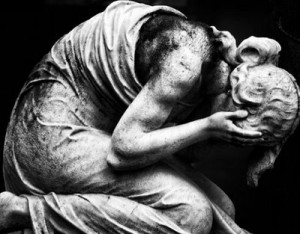 Grief as Gateway to Greater Love
Grief as Gateway to Greater Love
Memories of difficult past experiences can activate the art of paradoxical healing. We can become aware of our emotional scars when we allow ourselves to be with our immediate experiences and “welcome difficulty as a familiar comrade.” By abiding in our psychological pain we can grieve our hurts and their associated losses to liberate our hearts for the “sweetness that comes after grief.” Or we can choose to ignore our hurts, be forever burdened and sabotaged by them, and preserve their toxicity and violence that eats away at us from the inside and which we unconsciously and often uncontrollably act out on the world.
Grief is the great “unwinder” and dissolver of heartache and emotional pain. It is the savior of love, peace, sustainability, and what I call a “clean heart.” Rumi alludes to this unwinding of pain that we call to us as an “undressing.” The clean heart that results from undressing ourselves of sorrows Rumi refers to as “the naked body underneath” that is “the sweetness that comes after grief.” The cocoon of Rumi’s silkworm is the chrysalis of transformation we enter through our grief. Our disappearance “inside that room” is the cave of the dark night of the soul, where our pain is vanquished from where it has been embedded in the actual physiological structures of our heart-minds that determine who we are.
Did you know that when a butterfly is made, many of the cells of the caterpillar (Rumi’s silkworm) die inside the chrysalis and go through a complete metamorphosis to become “imaginal cells” which then differentiate to become new parts of the emergent butterfly? This fundamental, profound transformation represents the level to which we can go in order to fundamentally transform ourselves into people with novel experience and responses. But we cannot do it through feel-good spirituality. Not even close. We have to do the dark work. We have to let go of the light for a while instead of cling to it for dear life, which is little more than a band-aid, covertly fear-based survival, rather than a letting go to be worked upon by elemental forces of creation beyond our control. It is a trust in the intelligence of nature and our innate capacity for healing, that happens almost as organically as the silkworm’s transition. This is a metamorphosis we stymie when we cling to the intuited results (light, beauty, love) of transformation, rather than go through its process. I think many resist this passage both for fear as well as a lack of knowledge and “felt-sense” possibility (feeling the possibility for radically changing one’s heart).
Grief is the process of dying to who we have been and creating the space and clarity for birthing who we more joyfully and lovingly are. When we grieve—actually feel our sadness for what we lose or have lost or injured (which we recognize by not talking ourselves out of our difficult feelings)—in the presence of our own and others’ unconditional care, we transform pain into love by re-wiring our neural memory pathways of pain through new learning. When we don’t engage this grounded, hands-on process, we live with “keloids” in our hearts—incapacitated, frozen resources (non-transformed love) in our psyches (heart-minds) laid down as biological connections that govern our reactions and behaviors. These physiologically encoded wounds prevent us from experiencing maximum intimacy, peace, inner freedom, groundedness, and uncontrived care. They also keep us from the inherent morality of our own hearts.
To change this neuronal code we need make this wiring of encoded pain accessible, which we do by activating these memory wounds and associating novel, positive, loving behavior during their activation, which is when we are consciously feeling them. This way, the painful pathways of traumatic memory become either replaced (technically termed “extinguished”) or added to with positive, feel-good experience, which now becomes novel memory associated with the traumatic pathways. All this happens through the beneficence of grief—undressing our hurts to become their hidden joy.
The Nourish Practice
Jack Adam Weber’s “The Nourish Practice” is an easy, guided meditation-Qi Gong practice in radical gratitude and self-love. It is an Earth-based, body-centered practice — at once physiological and mythological — that is deeply relaxing and replenishing, especially for modern-day burn-out syndrome, and requires little physical effort.
The Nourish Practice “resets your nervous system” and fosters a rich inner life. You can purchase The Nourish Practice as a CD or Digital Download here.
Previous articles by Jack Adam Weber:
- Relationships: The Costs of Staying When We Should Leave
- Sex, Love and Attachment
- Emotional Work
- Choosing a Partner – How to Avoid Relationship Suicide
- Re-Thinking Love: Why Our Hearts Must Also Be Minded
- Spirituality – Reality Check
- 11 Crucial Tips for Better Digestive Health
- Shadow Work: Becoming a Sustainable Light Worker (Part 1)
- Oneness in Action: The GMO Eradication Movement
- After the Hurricane: Lessons from the Heart of Nature
- Relationships: How They Can Make Us Happier
- Heartbreak – Loving Ourselves Through Difficult Times
About the author:
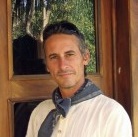 Jack Adam Weber, L.Ac. is a Chinese medicine physician, author, celebrated poet, organic farmer, and activist for body-centered spirituality. His books, artwork, and provocative poems can be found at his website PoeticHealing.com. He is also the creator of The Nourish Practice, an Earth-based rejuvenation meditation. Weber is available by phone for medical consultations and life-coaching.
Jack Adam Weber, L.Ac. is a Chinese medicine physician, author, celebrated poet, organic farmer, and activist for body-centered spirituality. His books, artwork, and provocative poems can be found at his website PoeticHealing.com. He is also the creator of The Nourish Practice, an Earth-based rejuvenation meditation. Weber is available by phone for medical consultations and life-coaching.
You can connect with Jack Adam Weber on Facebook or by emailing [email protected].

If you've found value in our articles, we invite you to support the release of our brand-new book, "Gratitude Practices for Kids: A Practical Guide for Adults to Instill a Spirit of Appreciation and Positivity in the Next Generation."
"Gratitude Practices for Kids" brings together over 25 innovative and accessible practices designed to enhance gratitude in everyday life. This comprehensive guide is backed by 17 scientific studies, ensuring each concept is grounded in research, underscoring our commitment to nurturing growth, emotional intelligence, and positive interactions between adults and children.
We encourage you to opt for the paperback version to celebrate this new release. Dive into its fresh pages away from digital distractions, allowing you to immerse yourself in the transformative practices it offers.
Over recent years, Wake Up World has faced significant online censorship, which has impacted our financial ability to operate. Moving into book publishing represents a strategic step to secure the ongoing funds needed to continue our mission. By purchasing Gratitude for Kids, you help us keep our content free and accessible to everyone, avoiding needing a paywall. With over 8,500 articles published in the last 13 years, we remain dedicated to keeping our valuable content open to all.

